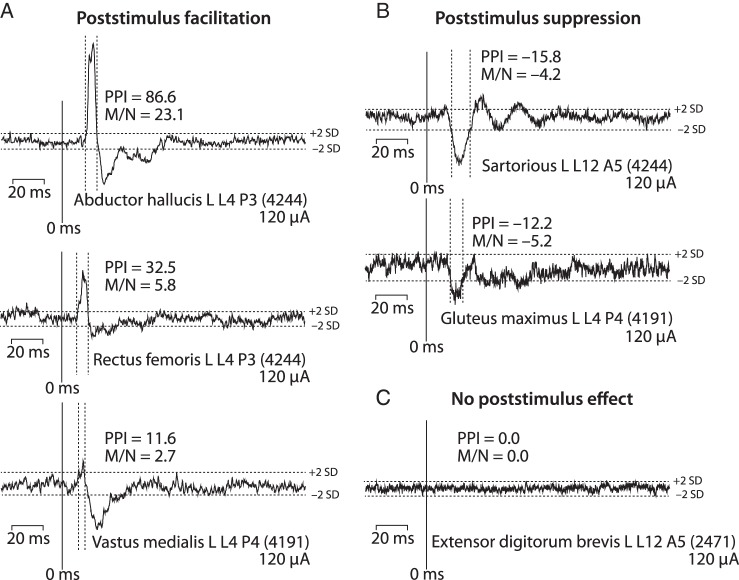Figure 1.
Types of poststimulus effects observed in stimulus-triggered averages of EMG activity at 120 μA applied to the contralateral hemisphere. (A) Poststimulus facilitation (PStF) is a transient increase in firing probability of motor units revealing an excitatory linkage between the population of cells stimulated and target motoneurons. (B) Poststimulus suppression (PStS) is a transient decrease in firing probability indicating an inhibitory linkage between the population of cells stimulated and target motoneurons. (C) Effects that showed no increase or decrease in firing probability indicating no synaptic linkage. The numbers in parenthesis indicate the number of stimulus trigger events on which the average is based. PStF and PStS were quantified both as the percent peak increase above baseline (PPI) and the mean-to-noise ratio (M/N) of the effect (see text). The onset and termination of PStF and PStS effects were defined as the points where the record crossed lines representing 2 standard deviations of the pre-trigger baseline average (horizontal dotted lines). The vertical dotted lines illustrate for strong and weak PStF effects the portion of the record that was counted as a significant effect.

